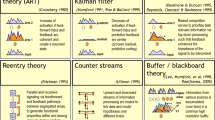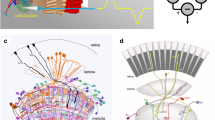Abstract
Werner Ernst Reichardt was born on January 30, 1924 in Berlin and at age 19 was drafted into the Luftwaffe and assigned to an electronic signals section laboratory. He became an active member of a resistance group and supplied radios for the movement in Germany. He emerged from the ashes of the Second World War and dedicated his scientific life to the development of the newborn specialty of biological physics. Following graduation from the Technische Hochschule Charlottenburg, he did a fellowship at CalTech under Max Delbrück. On returning to Germany he joined the Max Planck Institut and later became Director of the Max Planck Institut für Biologische Kybernetik in Tübingen, West Germany. Reichardt was one of the founders of the quantitative study of visually controlled orientation in animals. His work is very nearly unique in its close dialectic between elegant non-linear mathematical theory and quantitative experimental test of their predictions. During the 1950s Reichardt and his collaborators jointly developed an autocorrelation model (i.e. the firing rate of the involved visual neurones is closely correlated with the features of the pattern stimulating them) of how moving patterns are perceived by motion detectors in the visual system of the fly. This was the first mathematical description of a biological abstraction process. His findings apply to vertebrate vision, including motion detection and figure-ground description in human vision. His Max Planck Institute became a world renowned center for the computational approach to information processing by the nervous system. At his retirement party from the Institute he founded, Reichardt died on the evening of September 11th, 1992.
Similar content being viewed by others
References
Poggio T. Werner Reichardt. In Memoriam. Biol. Cybern. 1992; 69: 1–3.
Stent G. Tischrede for the celebration of Werner Reichardt's Emeritus status on September 11, 1992. Prepared by Dr Stent but never delivered because of Reichardt's unexpected and unfortunate death.
Schrödinger E. What is Life? Cambridge University Press, Cambridge, UK, 1944.
Dyson F. Disturbing the Universe. Harper & Row Publishing Co., New York, 1979, Chapter 6: 58–68.
Steive H. Laudatio zur Verheilung der Ehrendoktorwurde an Herrn Professor Dr.Werner Reichardt. Rheinische-Westfalische Technische Hochschule, Aachen, 1 June, 1989.
Kuiper JW. HP Heineken Award for 1985 for Bela Julaez and Werner Reichardt. Persbericht: Dienst Wetenschapsvoorlichting.
Gotz KG. Ruckblick auf die Amts-zeit von Werner Reichardt. Ansprache auf der Institutsversammlung nach seiner Emeritierung am 30/01/92.
Reichardt W. Processing of Optical Information by the Visual System of the Fly. Vision Res 1986; 26: 113–126.
Engelhaaf M, Borst A, Reichardt W. Computational Structure of a biological motiondetection system as revealed by local detector analysis in the fly nervous system. J. Opt. Soc. Am. 1989; 6: 1070–1087.
Fest J. Plotting Hitler's Death. The story of the German Resistance. Metropolitan Books. Henry Holt & Co, New York, NY, 1996.
Author information
Authors and Affiliations
Rights and permissions
About this article
Cite this article
Flynn, J.T. Werner Ernst Reichardt Ph.D: Founder of modern computational visual neurophysiology and anti-Nazi resistance fighter. Doc Ophthalmol 99, 225–236 (1999). https://doi.org/10.1023/A:1002620706906
Issue Date:
DOI: https://doi.org/10.1023/A:1002620706906




